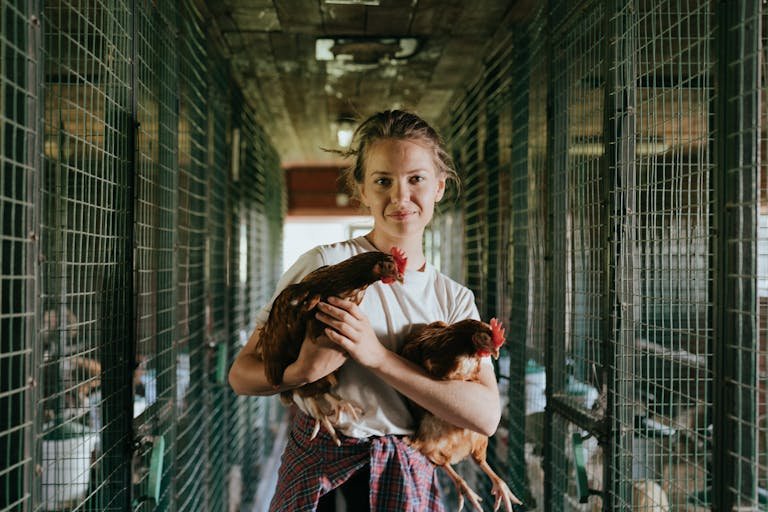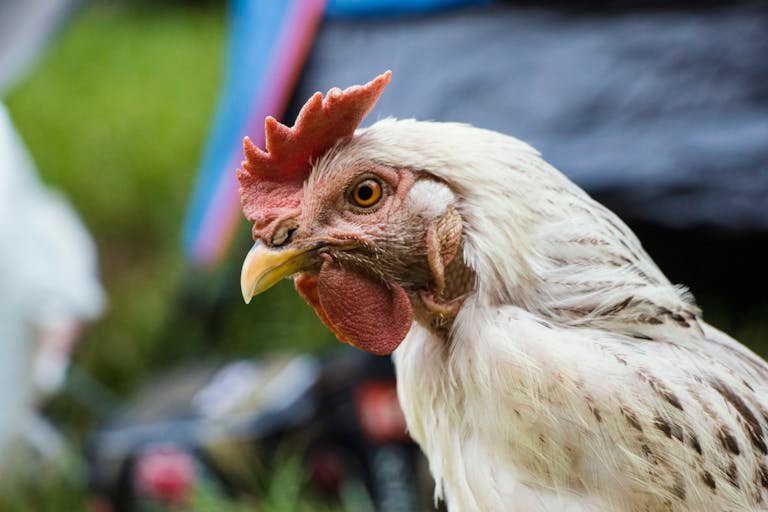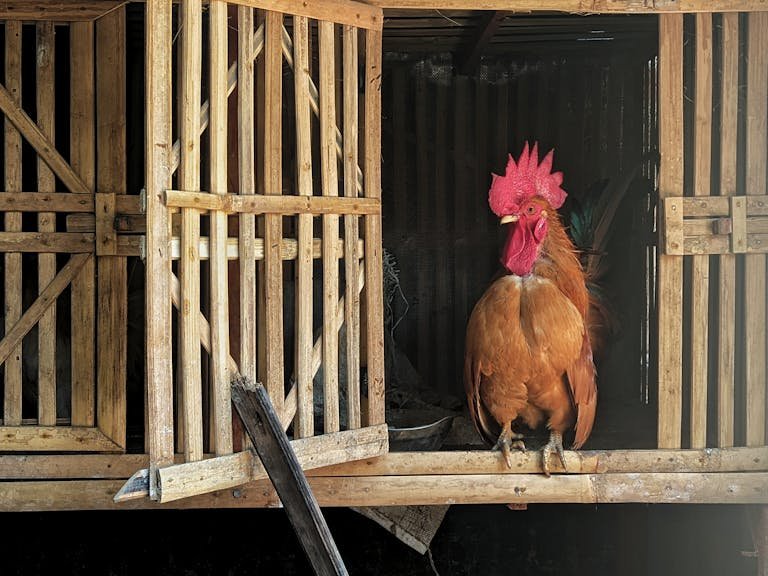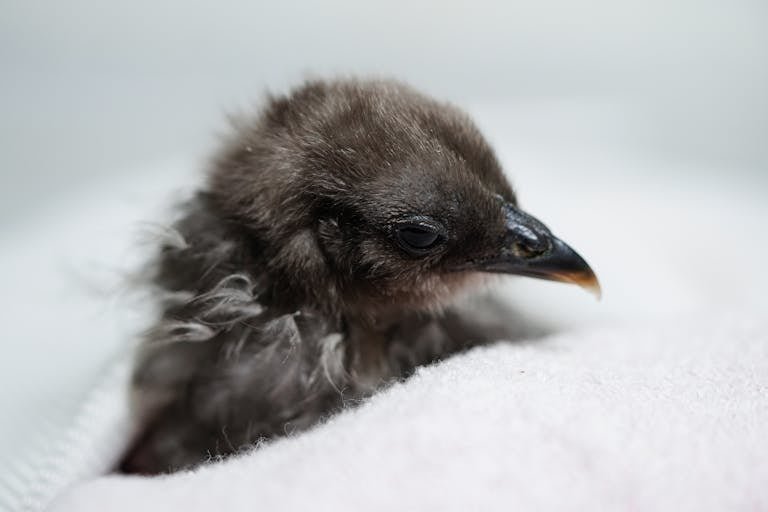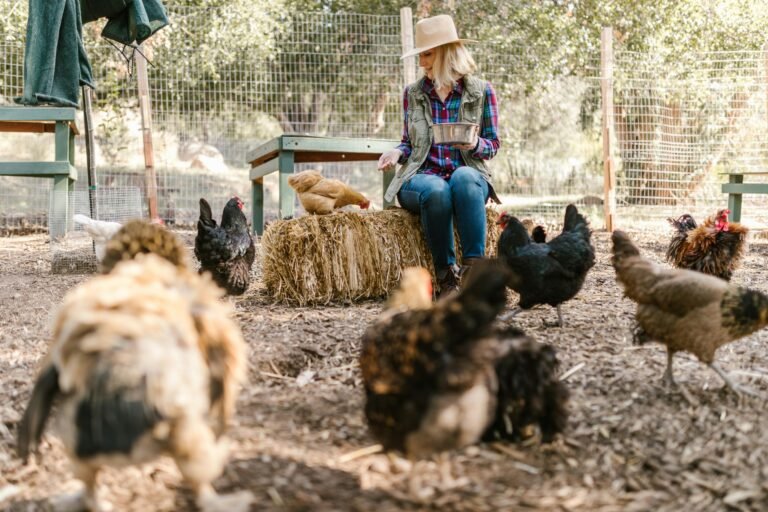Dominance in Chickens: A Quick Guide

The world of chickens is fascinating, with a complex social structure that might surprise those new to poultry keeping. One of the most critical aspects of this social structure is the “pecking order.” In this blog, I will dive into the Pecking Order in Chickens, how it works, why it’s important, and how you can manage it effectively in your flock. Understanding this hierarchy is key to ensuring a harmonious and healthy flock.
What is the Pecking Order?
Definition of Pecking Order
The pecking order is a social hierarchy established within a flock of chickens. It determines the rank or dominance of each bird, creating a clear social structure. The hierarchy is not just about who eats first; it influences every aspect of a chicken’s life, from roosting spots to mating rights.
Historical Background
The concept of the pecking order isn’t new; it was first observed in the early 20th century by Norwegian zoologist Thorleif Schjelderup-Ebbe. His work revealed that chickens naturally establish a hierarchy through pecking and other behaviors, hence the term “pecking order.” This behavior is instinctual, and rooted in survival and social harmony within the flock.
How Does the Pecking Order Work?
Establishing the Pecking Order
Chickens, like many social animals, naturally form a hierarchy. This process begins at a young age, usually when chicks are just a few weeks old. The pecking order is established through a series of interactions, which often involve pecking, chasing, or other aggressive behaviors. Over time, each bird finds its place within the flock.
The Role of the Alpha
In every flock, one chicken emerges as the dominant bird, often referred to as the “alpha.” This bird has the most control over resources such as food, water, and roosting spots. The alpha’s dominance is rarely challenged, and they often take on a protective role, warning the flock of potential dangers.
Hierarchy Tiers
Below the alpha, there are several tiers within the hierarchy. Each chicken knows its place, and this structure helps to reduce conflict and maintain order. The birds lower in the hierarchy may occasionally challenge those above them, but such disputes are usually resolved quickly.
Why is the Pecking Order Important?
Reducing Conflict
One of the primary purposes of the pecking order is to reduce conflict within the flock. By establishing a clear hierarchy, chickens avoid unnecessary fighting and aggression. Once the pecking order is set, most interactions within the flock become predictable and peaceful.
Maintaining Order
The pecking order helps to maintain order in the flock. Each chicken understands its role, which ensures that resources are distributed fairly. The alpha bird, for example, has first access to food and water, but the lower-ranked birds also get their turn without too much delay.
Protecting the Flock
The dominant bird often takes on a protective role, especially in free-range settings. This bird is usually the first to spot potential threats and will alert the rest of the flock. This behavior helps to safeguard the flock from predators and other dangers.
Read Also: Can Chickens Fly? The Surprising Truth
Factors Influencing the Pecking Order
Genetics and Temperament
Genetics plays a significant role in determining a chicken’s temperament and its position within the pecking order. Some breeds are naturally more dominant or aggressive, while others are more submissive. Understanding the genetic predispositions of your flock can help you anticipate and manage their social dynamics.
Environmental Factors
The environment in which your chickens live also has a significant impact on the pecking order. Factors such as the size of the coop, access to resources, and the presence of other animals can all influence the hierarchy. For example, overcrowding can lead to increased aggression, while a well-designed coop with ample space can help reduce conflict.
Social Dynamics
The interactions between individual chickens also shape the pecking order. Aggressive behaviors, submission, and even courtship all play a role in determining each bird’s rank. Social dynamics can be fluid, especially in younger flocks, where the hierarchy may shift as birds mature.
The Benefits of a Healthy Pecking Order
Reduced Aggression
A well-established pecking order contributes to a peaceful flock. Once the hierarchy is set, there is less need for aggressive behavior, as each bird understands its place. This reduction in aggression is beneficial for the overall well-being of the flock, as it minimizes stress and injury.
Improved Resource Allocation
With a clear hierarchy, resources such as food, water, and roosting spots are distributed more efficiently. The dominant birds get their fill first, followed by the others in order of rank. This system ensures that even the lowest-ranked birds get what they need without too much competition.
Enhanced Reproductive Success
In some cases, the pecking order can also influence reproductive success. Dominant birds may have better access to mates, which can lead to a higher likelihood of producing offspring. This natural selection process helps to ensure that the strongest and most adaptable birds pass on their genes to the next generation.
Understanding Pecking Order Problems
Common Issues
Despite its benefits, the pecking order can sometimes lead to problems within the flock. Common issues include aggression, bullying, and feather pecking. These behaviors can result in injury, stress, and even death if not managed properly.
Causes of Aggression
Aggression in chickens can be caused by a variety of factors, including overcrowding, lack of resources, and the introduction of new birds to the flock. Sometimes, a bird’s temperament or health issues can also trigger aggressive behavior. Understanding the root cause of aggression is the first step in addressing it.
Bullying and Feather Pecking
Bullying and feather pecking are common issues in flocks with an unbalanced pecking order. These behaviors can lead to severe stress and injury, particularly for the lowest-ranked birds. It’s important to monitor your flock for signs of bullying and take steps to address it if it occurs.
Potential Consequences
If pecking order problems are not addressed, they can have serious consequences for the flock. Chronic stress and injury can lead to a decline in egg production, weakened immune systems, and even death. In severe cases, aggressive birds may need to be separated from the flock to prevent further harm.
How to Manage and Maintain a Healthy Pecking Order
Provide Ample Space
One of the most effective ways to manage the pecking order is to ensure your chickens have enough space to roam freely. Overcrowding can lead to increased aggression and competition for resources, so it’s important to provide a spacious coop and run.
Enrich Their Environment
An enriched environment can help to reduce pecking and other aggressive behaviors. Providing toys, perches, and hiding spots can keep your chickens entertained and distracted from pecking. You can also introduce new objects or challenges to stimulate their minds and reduce boredom.
Maintain Cleanliness
A clean coop is essential for reducing stress and preventing feather pecking. Regular cleaning helps to remove potential stressors, such as parasites or ammonia buildup. A clean environment also promotes overall health, reducing the likelihood of illness or injury.
Provide Balanced Nutrition
A well-balanced diet is crucial for maintaining a healthy pecking order. Nutritional deficiencies can lead to aggressive behavior, so it’s important to provide a diet that meets all of your chickens’ needs. You can also offer supplements, such as oyster shells or grit, to support their health.
Separate Offenders
If aggressive behavior persists despite your best efforts, it may be necessary to temporarily separate the aggressive bird from the flock. This allows the flock to calm down and re-establish a more balanced pecking order. Reintroducing the bird after a short period can sometimes result in a lower rank, reducing its aggressive behavior.
Consider Debeaking
As a last resort, debeaking may be considered to prevent severe pecking and injury. This procedure involves trimming the tip of the beak to reduce its sharpness. However, debeaking should only be done under the guidance of a veterinarian, as it carries potential risks and ethical considerations.
Read Also: Why Do Chickens Sneeze? Uncover the Poultry Puzzle
Conclusion
Understanding the pecking order in chickens is essential for anyone keeping a flock. By recognizing the importance of this social hierarchy and learning how to manage it effectively, you can ensure a peaceful, healthy, and productive flock. Whether you’re a seasoned chicken keeper or new to the world of poultry, I hope this guide has provided you with the knowledge and tools you need to maintain a harmonious pecking order in your flock.

